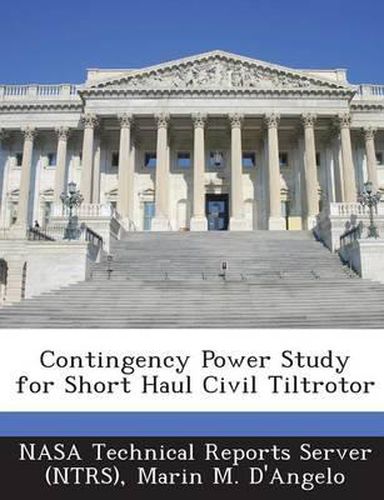Readings Newsletter
Become a Readings Member to make your shopping experience even easier.
Sign in or sign up for free!
You’re not far away from qualifying for FREE standard shipping within Australia
You’ve qualified for FREE standard shipping within Australia
The cart is loading…






NASA has concluded from previous studies that the twin engine tiltrotor is the most economical and technologically viable rotorcraft for near-term civil applications. Twin engine civil rotorcraft must be able to hover safely on one engine in an emergency. This emergency power requirement generally results in engines 20 to 50 percent larger than needed for normal engine operation, negatively impacting aircraft economics. This study identifies several contingency power enhancement concepts, and quantifies their potential to reduce aircraft operating costs. Many unique concepts were examined, and the selected concepts are simple, reliable, and have a high potential for near term realization. These engine concepts allow extremely high turbine temperatures during emergency operation by providing cooling to the power turbine and augmenting cooling of both turbines and structural hardware. Direct operating cost are reduced 3 to percent, which could yield a 30 to 80 percent increase in operating profits. The study consists of the definition of an aircraft economics model and a baseline engine, and an engine concept screening study, and a preliminary definition of the selected concepts. The selected concepts are evaluated against the baseline engine, and the critical technologies and development needs are identified, along with applications for this technology.
$9.00 standard shipping within Australia
FREE standard shipping within Australia for orders over $100.00
Express & International shipping calculated at checkout
NASA has concluded from previous studies that the twin engine tiltrotor is the most economical and technologically viable rotorcraft for near-term civil applications. Twin engine civil rotorcraft must be able to hover safely on one engine in an emergency. This emergency power requirement generally results in engines 20 to 50 percent larger than needed for normal engine operation, negatively impacting aircraft economics. This study identifies several contingency power enhancement concepts, and quantifies their potential to reduce aircraft operating costs. Many unique concepts were examined, and the selected concepts are simple, reliable, and have a high potential for near term realization. These engine concepts allow extremely high turbine temperatures during emergency operation by providing cooling to the power turbine and augmenting cooling of both turbines and structural hardware. Direct operating cost are reduced 3 to percent, which could yield a 30 to 80 percent increase in operating profits. The study consists of the definition of an aircraft economics model and a baseline engine, and an engine concept screening study, and a preliminary definition of the selected concepts. The selected concepts are evaluated against the baseline engine, and the critical technologies and development needs are identified, along with applications for this technology.